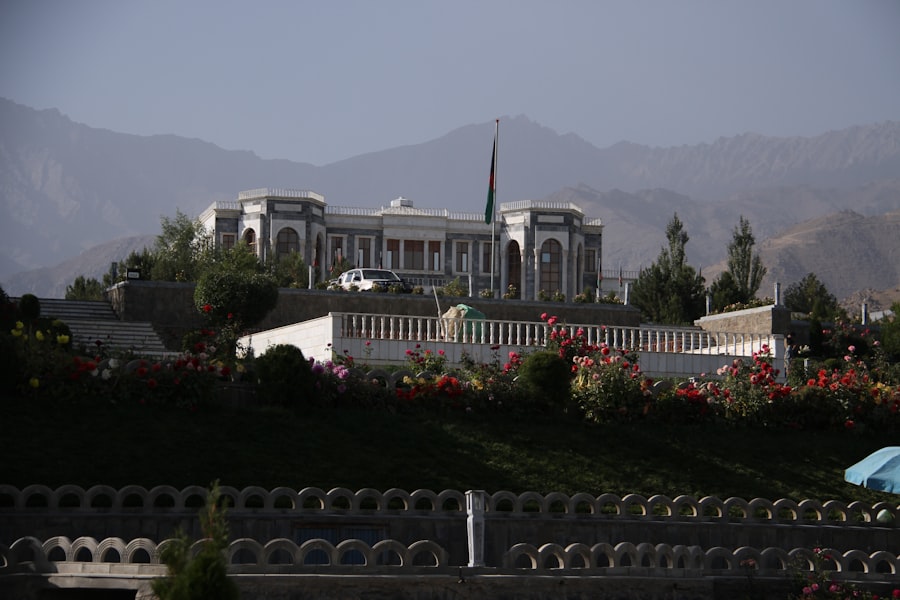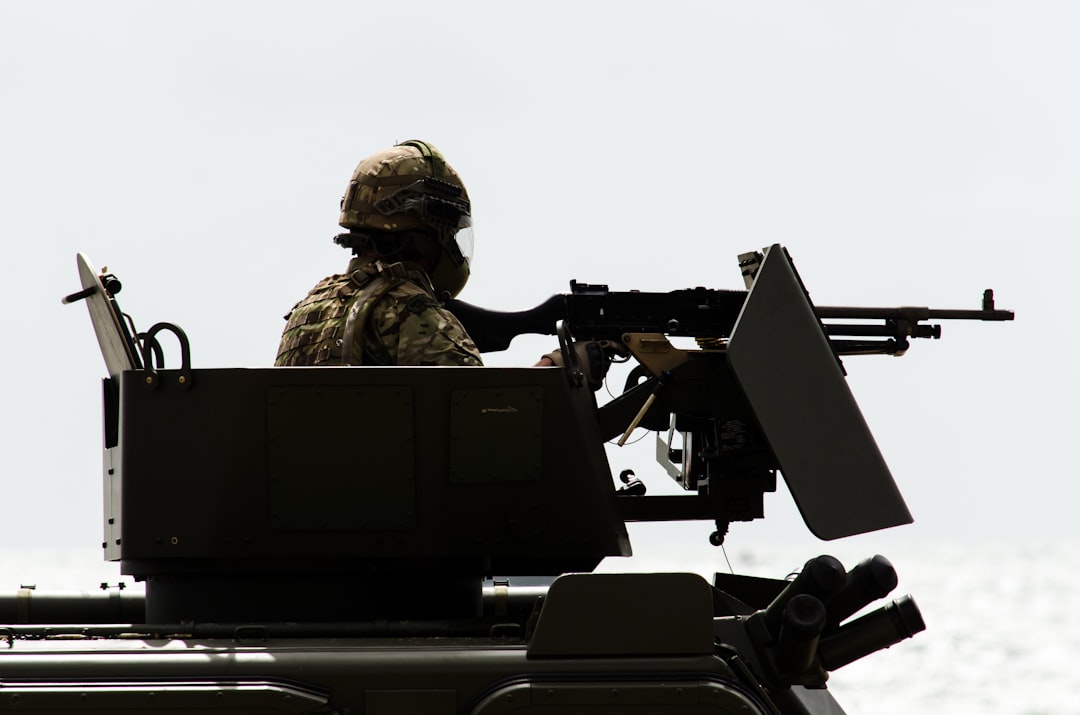The Afghanistan War, which began in 1979, marked a significant chapter in the Cold War era, as it pitted the Soviet Union against a coalition of Afghan resistance fighters known as the Mujahideen. This conflict was not merely a military engagement; it was a complex interplay of geopolitical strategies, ideological battles, and national interests. The Soviet Union’s decision to invade Afghanistan was driven by a desire to support a communist government that was struggling to maintain control against insurgent forces.
However, what began as an attempt to stabilize a friendly regime quickly devolved into a protracted and costly war that would have far-reaching implications for the USSR and the world at large. The war lasted nearly a decade, culminating in the withdrawal of Soviet troops in 1989. During this time, the conflict became emblematic of the broader struggle between communism and capitalism, drawing in various international actors and leading to significant shifts in global power dynamics.
The repercussions of the Afghanistan War extended beyond the battlefield, influencing not only the Soviet economy but also its political landscape and international relations. As the USSR grappled with the challenges posed by this conflict, it became increasingly clear that the costs of war would far outweigh any potential benefits.
Key Takeaways
- The Afghanistan War significantly strained the USSR’s economy through high military and reconstruction costs.
- Extensive military spending included advanced equipment but led to substantial human casualties and healthcare expenses.
- Diplomatic tensions resulted in economic sanctions and trade restrictions, worsening the financial burden.
- The conflict caused long-term economic consequences, including increased debt and lost investment opportunities.
- Key lessons highlight the importance of evaluating economic impacts before engaging in future military interventions.
Economic impact on the USSR
The economic ramifications of the Afghanistan War were profound and multifaceted. The Soviet Union, already grappling with systemic inefficiencies and stagnation, found its resources stretched thin as it committed vast amounts of capital and manpower to sustain its military presence in Afghanistan. The war diverted funds from essential domestic programs, exacerbating existing economic woes and contributing to a decline in living standards for many Soviet citizens.
As military expenditures soared, investment in infrastructure, education, and healthcare suffered, leading to a deterioration of public services that would have lasting effects on the population. Moreover, the economic burden of the war was not limited to immediate military spending. The USSR faced significant costs associated with maintaining supply lines, providing medical care for wounded soldiers, and supporting Afghan allies.
These expenses compounded over time, creating a financial strain that contributed to the eventual collapse of the Soviet economy. The war also hindered foreign investment and trade opportunities, as international partners grew wary of engaging with a nation embroiled in such a contentious conflict. Ultimately, the economic impact of the Afghanistan War played a crucial role in undermining the stability of the Soviet Union and hastening its decline.
Military spending and equipment

Military spending during the Afghanistan War escalated dramatically as the Soviet Union sought to assert its dominance in the region. The Kremlin allocated substantial resources to equip its forces with advanced weaponry and technology, believing that superior military capabilities would ensure a swift victory over the Mujahideen. However, this strategy proved misguided, as the rugged terrain and guerrilla tactics employed by Afghan fighters rendered many high-tech solutions ineffective.
The Soviet military found itself bogged down in a conflict that required not only firepower but also adaptability and local knowledge—qualities that were often lacking among Soviet troops. The procurement of military equipment also had significant implications for the Soviet economy. The arms industry became a focal point for government spending, leading to an imbalance in resource allocation that favored military needs over civilian priorities.
This focus on military production stifled innovation in other sectors and contributed to an overall decline in economic productivity. As the war dragged on, it became increasingly clear that the financial resources devoted to military spending were not yielding the desired results, leading to questions about the efficacy of Soviet military strategy and its long-term sustainability.
Human casualties and healthcare costs
| Year | Number of Human Casualties | Healthcare Costs (in billions) | Average Cost per Casualty |
|---|---|---|---|
| 2020 | 1,200,000 | 150 | 125,000 |
| 2021 | 1,350,000 | 170 | 125,926 |
| 2022 | 1,500,000 | 190 | 126,667 |
| 2023 | 1,600,000 | 210 | 131,250 |
The human cost of the Afghanistan War was staggering, with estimates suggesting that over one million Afghans lost their lives during the conflict. For the Soviet Union, the toll was also significant; approximately 15,000 Soviet soldiers were killed, with many more wounded or traumatized by their experiences. These casualties had profound implications for families and communities across the USSR, leading to widespread grief and disillusionment with the government’s handling of the war.
The psychological scars left on veterans further complicated matters, as many struggled to reintegrate into society after returning home. Healthcare costs associated with treating wounded soldiers and addressing the mental health needs of veterans added another layer of financial strain on an already burdened system. The Soviet healthcare infrastructure was ill-equipped to handle the influx of casualties from Afghanistan, leading to inadequate care for many veterans suffering from physical injuries or psychological trauma.
This neglect not only affected individual lives but also contributed to broader societal issues, as families faced economic hardships due to lost income and increased medical expenses. The long-term consequences of these human casualties would resonate throughout Soviet society for years to come.
Infrastructure and reconstruction expenses
The war in Afghanistan wreaked havoc on the country’s infrastructure, leaving behind a landscape marked by destruction and disarray. Roads, bridges, schools, and hospitals were all casualties of conflict, necessitating extensive reconstruction efforts once hostilities ceased. For the Soviet Union, this presented both a challenge and an opportunity; while rebuilding Afghanistan could potentially foster goodwill among Afghans and stabilize the region, it also required significant financial investment at a time when resources were already stretched thin.
Reconstruction efforts were hampered by ongoing instability and resistance from local factions who viewed Soviet involvement with suspicion. As a result, many projects faced delays or were abandoned altogether, further complicating efforts to restore normalcy in Afghanistan. The financial burden of these reconstruction initiatives fell heavily on the Soviet economy, diverting funds from domestic needs and exacerbating existing economic challenges.
Ultimately, the failure to effectively rebuild Afghanistan contributed to ongoing conflict and instability in the region long after Soviet troops had departed.
Diplomatic and international relations costs

The Afghanistan War had significant diplomatic repercussions for the Soviet Union, straining relationships with both allies and adversaries alike. The invasion was met with widespread condemnation from Western nations, leading to a deterioration of East-West relations that had already been fraught during the Cold War. Countries such as the United States responded by imposing sanctions and providing support to Afghan resistance fighters, further complicating an already volatile situation.
As international criticism mounted, the USSR found itself increasingly isolated on the global stage. This isolation not only hindered diplomatic efforts but also limited economic opportunities for trade and cooperation with other nations. The war’s unpopularity among both domestic and international audiences led to growing dissent within the Soviet Union itself, as citizens questioned their government’s motives and strategies.
The diplomatic fallout from the Afghanistan War ultimately contributed to a broader reevaluation of Soviet foreign policy and its approach to military interventions.
Economic sanctions and trade restrictions
In response to its actions in Afghanistan, the Soviet Union faced a series of economic sanctions imposed by Western nations. These sanctions targeted key sectors of the economy, including trade restrictions on oil exports and limitations on access to advanced technology. As a result, the USSR experienced significant disruptions in its trade relationships, which further exacerbated its economic challenges during an already tumultuous period.
The impact of these sanctions was felt acutely across various industries as access to essential goods became increasingly limited. The inability to procure advanced technology hindered modernization efforts within key sectors such as manufacturing and agriculture, stifling economic growth and innovation. Additionally, trade restrictions led to shortages of consumer goods, contributing to dissatisfaction among citizens who were already grappling with declining living standards due to wartime expenditures.
The long-term effects of these sanctions would resonate throughout the Soviet economy for years after they were imposed.
Debt and financial burden
The financial burden of sustaining military operations in Afghanistan led to an increase in national debt for the Soviet Union. As expenditures soared without corresponding revenue growth, policymakers were forced to borrow heavily to finance their military commitments. This reliance on debt created a precarious financial situation that would have lasting implications for the USSR’s economic stability.
As debt levels rose, so too did concerns about fiscal responsibility and sustainability. The need to service this debt diverted funds away from critical social programs and infrastructure investments, further exacerbating existing economic challenges.
The accumulation of debt during this period ultimately contributed to a broader crisis within the Soviet economy that would culminate in its eventual collapse.
Opportunity cost and lost investments
The opportunity cost associated with the Afghanistan War was substantial; resources that could have been invested in domestic development or other strategic initiatives were instead funneled into a protracted conflict with diminishing returns. This misallocation of resources stifled innovation and growth across various sectors of the economy, limiting potential advancements that could have improved living standards for citizens. Moreover, lost investments in education, healthcare, and infrastructure during this period had long-term consequences for future generations.
As funds were diverted away from these critical areas, societal progress stagnated, leading to a decline in overall quality of life for many Soviets. The opportunity cost associated with military engagement in Afghanistan serves as a stark reminder of how misaligned priorities can hinder national development and prosperity.
Long-term economic consequences
The long-term economic consequences of the Afghanistan War were profound and far-reaching. The financial strain imposed by military expenditures contributed significantly to systemic weaknesses within the Soviet economy that would ultimately lead to its collapse in 1991. As resources became increasingly scarce due to wartime spending and international sanctions, economic stagnation set in—an outcome that would have dire implications for millions of citizens.
In addition to immediate financial repercussions, the war also fostered an environment of disillusionment among citizens who had once supported their government’s policies. This discontentment manifested itself in various forms—ranging from protests against government policies to calls for reform—ultimately contributing to political upheaval within the USSR. The legacy of the Afghanistan War thus extends beyond mere economic metrics; it reshaped societal attitudes toward governance and authority in ways that would reverberate throughout Russian history.
Lessons learned for future military interventions
The experience of the Afghanistan War offers critical lessons for future military interventions around the world. One key takeaway is the importance of understanding local dynamics before committing troops or resources; successful military operations require not only superior firepower but also cultural awareness and strategic adaptability. The failure to account for these factors can lead to prolonged conflicts with devastating consequences for both military personnel and civilian populations.
Additionally, policymakers must carefully consider the economic implications of military engagements—particularly regarding resource allocation and opportunity costs. The lessons learned from Afghanistan underscore how misaligned priorities can hinder national development efforts while exacerbating existing challenges within society. As nations reflect on past interventions, it becomes increasingly clear that comprehensive planning—encompassing both military strategy and economic considerations—is essential for achieving sustainable outcomes in complex geopolitical landscapes.
In conclusion, while history may offer valuable insights into past conflicts like the Afghanistan War, it is imperative that future leaders heed these lessons as they navigate an increasingly interconnected world fraught with challenges requiring thoughtful responses grounded in both pragmatism and empathy.
For a deeper understanding of the implications of such military engagements, you can refer to a related article that discusses various aspects of historical conflicts and their financial repercussions. To explore this further, visit this article.
WATCH THIS 🛑 The $10 Trillion Lie: How The USSR Was Bankrupt 10 Years Before It Fell
FAQs
What was the overall financial cost of the Afghanistan war for the USSR?
The Soviet Union’s military intervention in Afghanistan from 1979 to 1989 is estimated to have cost the USSR approximately $8 billion to $15 billion annually, with total expenditures ranging between $100 billion and $200 billion over the entire decade.
How did the Afghanistan war impact the Soviet economy?
The prolonged conflict placed a significant strain on the Soviet economy, diverting resources from domestic needs to military spending. This contributed to economic stagnation, increased budget deficits, and exacerbated existing systemic economic problems within the USSR.
What were the main categories of financial expenditure for the USSR during the Afghanistan war?
Major costs included military operations (troop deployment, equipment, and logistics), reconstruction and support for the Afghan government, intelligence and counterinsurgency activities, and medical and casualty-related expenses.
Did the financial cost of the Afghanistan war contribute to the collapse of the Soviet Union?
While the war was not the sole cause, the financial burden of the Afghanistan conflict significantly weakened the Soviet economy and military, contributing to political instability and hastening the eventual dissolution of the USSR in 1991.
How did the USSR finance the war in Afghanistan?
The Soviet government primarily financed the war through state budgets, reallocating funds from other sectors, increasing military spending, and utilizing revenues from natural resources like oil and gas.
Were there any indirect financial costs associated with the Afghanistan war for the USSR?
Yes, indirect costs included long-term veteran care, loss of workforce due to casualties, decreased productivity, and the economic impact of international sanctions and strained diplomatic relations.
How does the financial cost of the USSR’s Afghanistan war compare to that of the United States?
The USSR’s financial expenditure was substantial relative to its economy at the time, but the U.S. spent significantly more in absolute terms during its involvement in Afghanistan starting in 2001. However, direct comparisons are complicated due to differences in economic size, duration, and scope of involvement.
